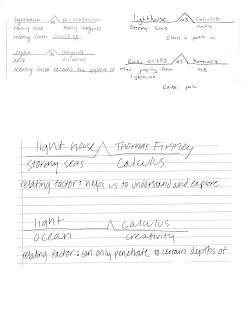
This tree map was included in a geometry unit designed to help students differentiate the notation and vocabulary of basic geometric structures. It was a topic the teacher felt the students had struggled with in the past that prevented them from doing more complex geometry. Before creating the tree map the students had created circle maps for each of the basic words (see the posting on Thur, Jan 24), and they defined them using NUA's defining format. Immediately before creating this tree map, the students did a List Group Label activity. Groups of 4 were given index cards with each of the phrases you see on the tree map mixed together in no particular order. They sorted the cards based on their own categories and then made the tree map based on their categories.

 These multi-flow maps were used in an Advaned Algebra class to help connect the relationships between matrices and transformations. The students were given the blank maps and filled them in as the unit progressed. This is an example of Thinking Maps being used as graphic organizers. The students reported they found it very helpful.
These multi-flow maps were used in an Advaned Algebra class to help connect the relationships between matrices and transformations. The students were given the blank maps and filled them in as the unit progressed. This is an example of Thinking Maps being used as graphic organizers. The students reported they found it very helpful.





